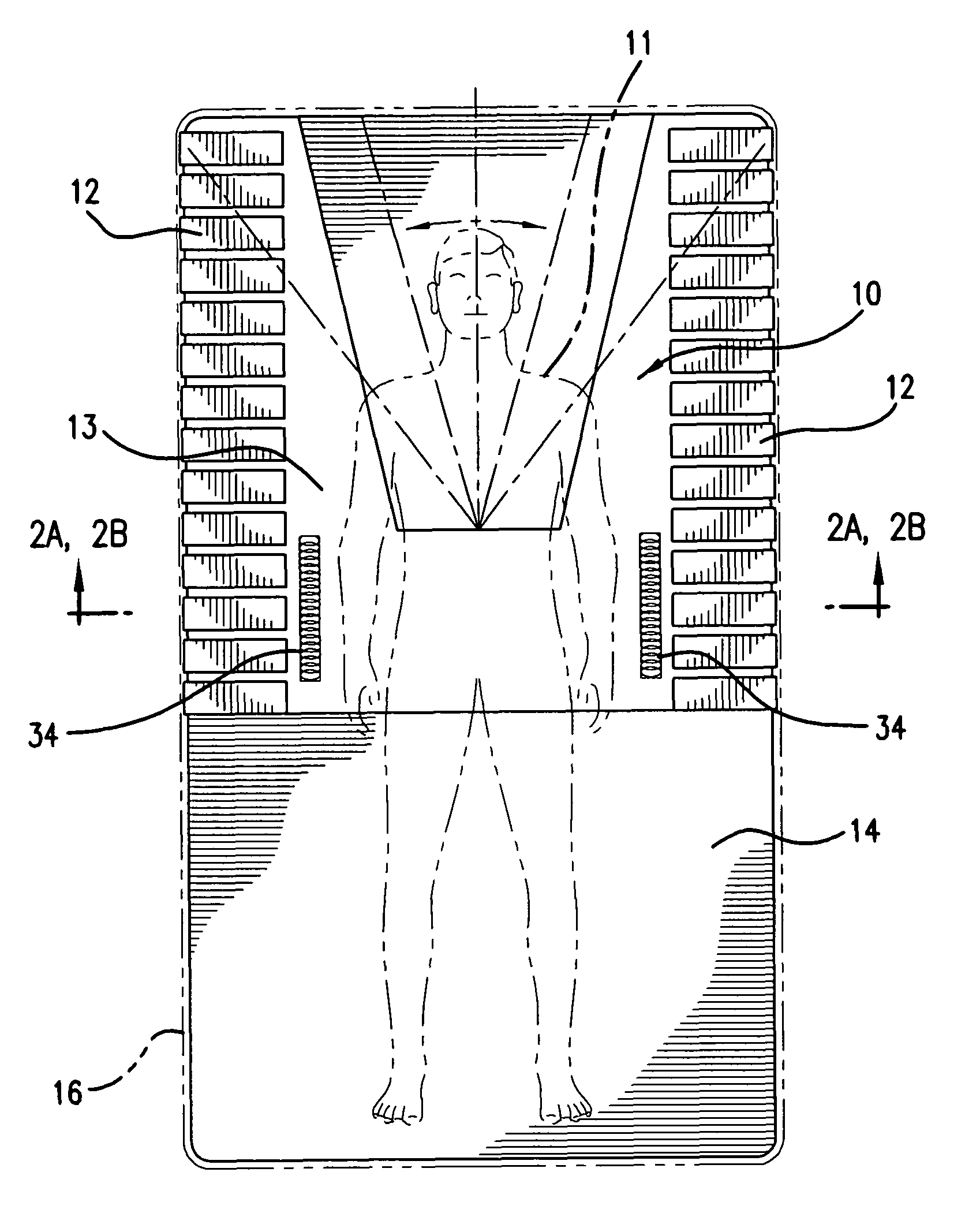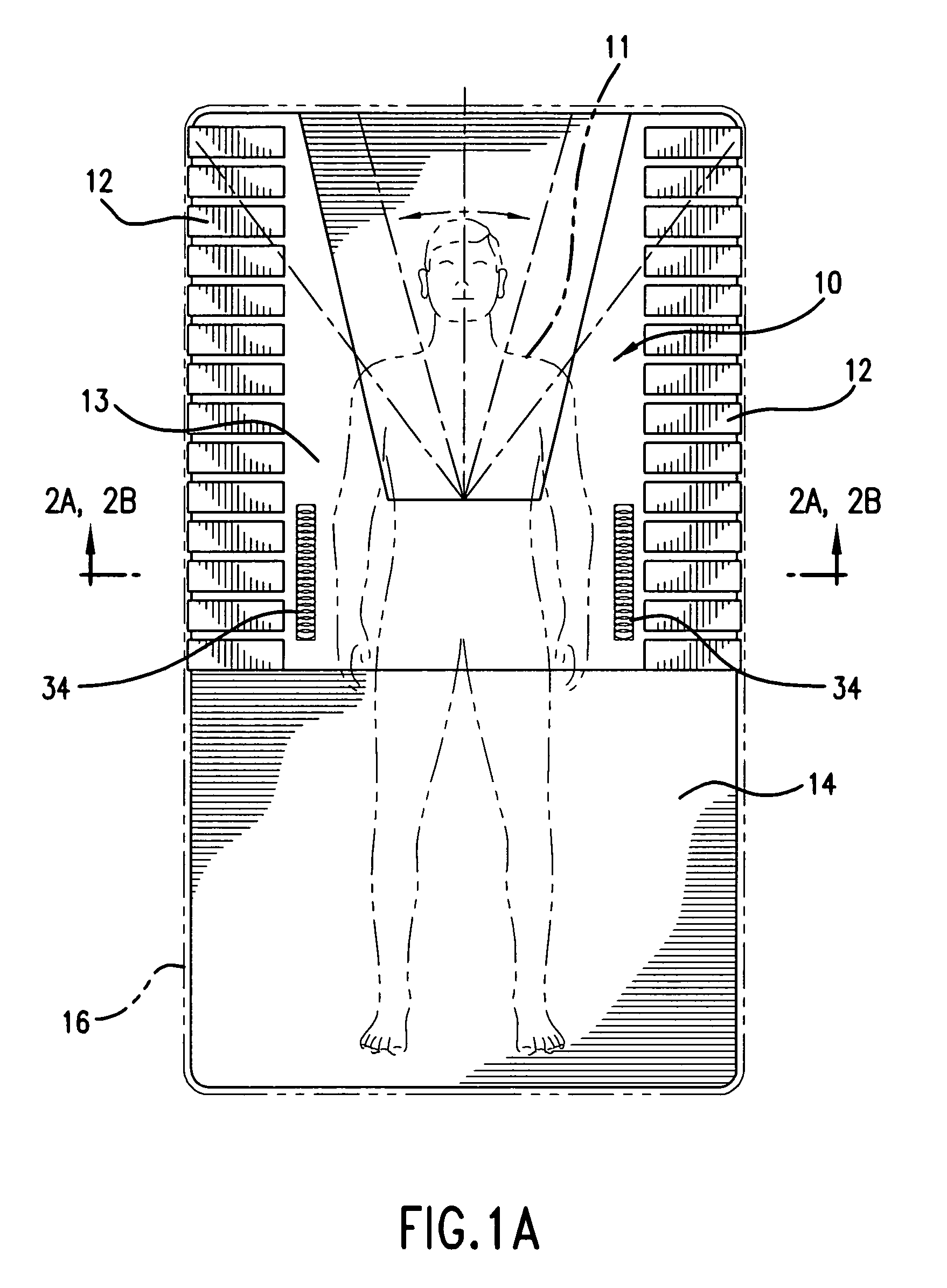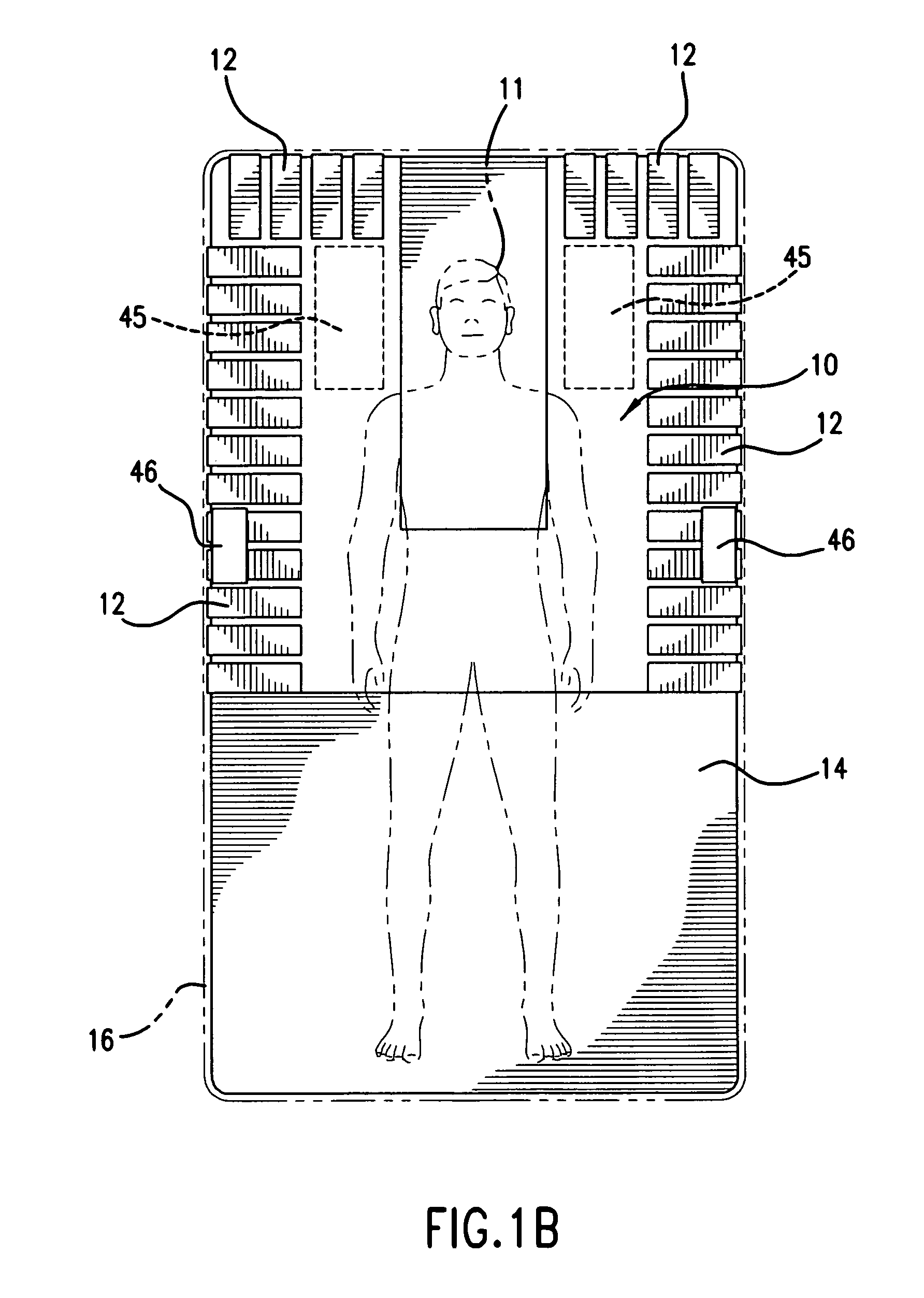Self-powered steady-state skin-cooling support surfaces
a support surface and self-powered technology, applied in the field of self-powered or self-powered skin cooling support surfaces, can solve the problems of pressure ulcers, bedsores, or decubitus ulcers, and can be life-threatening for bedridden or wheelchair-bound people, and their cost precludes their use by the vast majority of caregivers in the setting
- Summary
- Abstract
- Description
- Claims
- Application Information
AI Technical Summary
Benefits of technology
Problems solved by technology
Method used
Image
Examples
Embodiment Construction
[0047]Summaries of Preferred Embodiments. The prototype devices described have been designed to moderately reduce skin temperature as an aid to pressure ulcer treatment and prevention. More accurately, the devices described limit significantly the warming of the skin that occurs when uncovered skin is insulated by contact with a mattress, seat, or seat back. (This is often referred to as “relative cooling”, because the skin is cooled relative to its temperature under standard insulated conditions of support but may still be somewhat warmer than uncovered skin.) The devices also have a number of comfort-related applications in non-medical situations such as automobile or truck seats, office furniture, or mattresses for the home.
[0048]In contrast with a conventional mattress or other resting surface, such as a wheelchair seat cushion or general seating, the support surfaces of the present invention distributes heat away from the user's body during the support period. This keeps the us...
PUM
 Login to View More
Login to View More Abstract
Description
Claims
Application Information
 Login to View More
Login to View More - R&D
- Intellectual Property
- Life Sciences
- Materials
- Tech Scout
- Unparalleled Data Quality
- Higher Quality Content
- 60% Fewer Hallucinations
Browse by: Latest US Patents, China's latest patents, Technical Efficacy Thesaurus, Application Domain, Technology Topic, Popular Technical Reports.
© 2025 PatSnap. All rights reserved.Legal|Privacy policy|Modern Slavery Act Transparency Statement|Sitemap|About US| Contact US: help@patsnap.com



